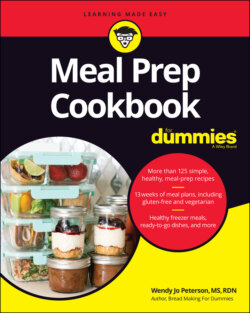Читать книгу Meal Prep Cookbook For Dummies - Wendy Jo Peterson - Страница 47
Shopping with the Seasons
ОглавлениеBerries may sound delicious in the winter, but they really aren’t in season in the Unitec States during the colder months. You may opt to buy berries in the winter, but they’ll be a lot pricier and, honestly, probably not as nutrient-dense as you may think. For produce to get to our markets off season, they’re most likely grown in Mexico or South America. Then they’re shipped long distances to get to our tables. During this process, vegetables and fruits succumb to oxidation and lose some nutritional density along the way.
There are many positive aspects to shopping local and in-season produce. The less distance the food has to travel, the better the price and nutrient density.
Here’s a condensed version of seasonal produce around the United States. If you’re in the southern or western states, this list may vary. Check with your local farmer’s market to know what and when produce grows best for your area.
Spring: Apricots, artichokes, arugula, asparagus, butter lettuce, cabbage, citrus, fava beans, fennel, green beans, peas, pineapple, rhubarb, spinach, Swiss chard, watercress
Summer: Avocados, beets, bell peppers, berries, cherries, corn, cucumber, eggplant, grapes, green beans, melons, okra, peppers, stone fruit, summer squash, tomatoes, watermelon
Fall: Apples, broccoli, Brussels sprouts, cauliflower, cabbage, grapes, lettuce, pears, plums, winter squashes, turnips
Winter: Citrus, collard greens, kale, kiwi, leeks, sweet potatoes, rutabaga, winter squash, turnips
